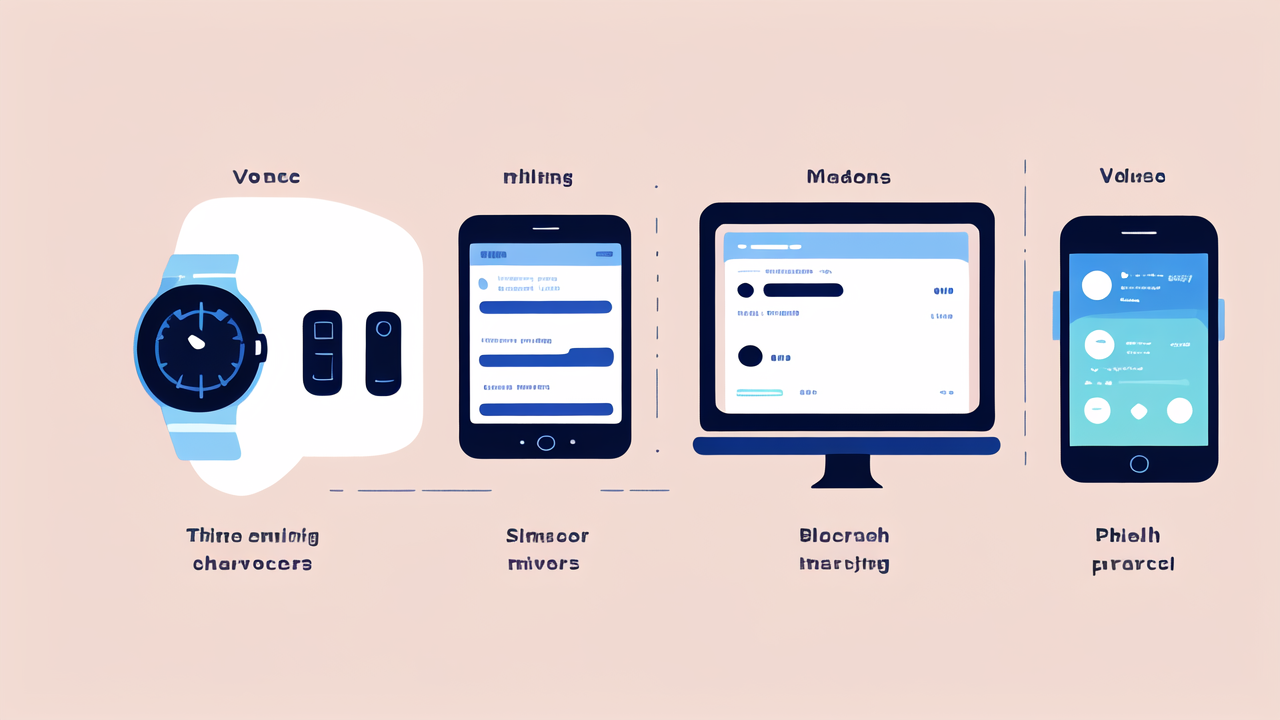Introduction to Smart Watch Technology in the United States
The Advent of Smart Watches in Modern Society
Smart watches have come a long way since their inception. They started as simple digital watches. Now, they are cool gadgets that do much more. The first smart watches appeared in the early 2000s. They could store contacts and do basic tasks. As tech improved, so did smart watches. They became smaller, faster, and more powerful. Today's smart watches are like mini computers on your wrist. They can track fitness, show notifications, and even make calls. The rise of smart watches marks a new era in personal tech. They've changed how we interact with our devices and manage our daily lives.

Key Features that Define a Smart Watch
What makes a watch "smart"? Several key features set them apart from regular watches. First, smart watches have touchscreens. This allows for easy navigation and input. They also connect to smartphones via Bluetooth. This enables them to display notifications and messages. Many smart watches have health tracking features. These include heart rate monitors and step counters. Some can even track sleep patterns and stress levels. GPS is another common feature in smart watches. It's useful for mapping runs and tracking location. Voice assistants like Siri or Google Assistant are often included. These allow for hands-free control and queries. Lastly, app support is a crucial feature. It lets users customize their watch's functions.
The Transformation of Consumer Expectations in Smart Watches
From Fitness Enthusiasts to Health Conscious Users
Early smart watches focused mainly on fitness tracking. They counted steps and tracked workouts. This appealed to fitness enthusiasts and athletes. Over time, the focus shifted to overall health monitoring. Now, smart watches can measure heart rate, blood oxygen, and even ECG. This shift has broadened the appeal of smart watches. They're no longer just for fitness buffs. Health-conscious individuals of all ages now use them. Smart watches can detect irregular heartbeats and falls. Some can even measure blood pressure and blood glucose levels. These features make them valuable tools for managing chronic conditions. They also help users stay proactive about their health. This evolution has turned smart watches into personal health assistants.

The Shift Towards Integrating AI and Machine Learning
AI and machine learning are changing smart watches. These technologies make watches smarter and more helpful. AI can analyze data from various sensors. It then provides personalized insights and recommendations. For example, it can suggest workout routines based on your fitness level. Machine learning helps improve accuracy in health monitoring. It can detect patterns that might indicate health issues. Some watches use AI to predict stress levels and suggest relaxation techniques. Voice assistants are becoming more advanced with AI. They can understand context and provide more natural responses. AI also helps in battery optimization. It learns user habits and adjusts power usage accordingly. As AI improves, smart watches will become even more intelligent and useful.
Market Dynamics and Future Trends
Current Market Leaders in the Smart Watch Industry
The smart watch market is dominated by a few key players. Apple leads with its Apple Watch series. It's known for its sleek design and seamless iOS integration. Samsung is a strong competitor with its Galaxy Watch line. These watches work well with Android phones. Fitbit, now owned by Google, focuses on fitness tracking. Garmin is popular among serious athletes and outdoor enthusiasts. Fossil offers stylish smart watches that blend fashion with tech. Each brand has its strengths and target audience. Apple and Samsung compete for the high-end market. Fitbit and Garmin cater to fitness-focused users. Fossil appeals to those who want a more traditional watch look. The market is competitive, driving innovation and improving features.

Innovations Shaping the Future of Smart Watches
The future of smart watches looks exciting. New technologies are set to make them even cooler. Flexible displays may allow for larger screens that wrap around the wrist. Better batteries could extend usage time to weeks. Some companies are working on smart watches with built-in projectors. These could display information on your hand or arm. Improved health sensors might detect more conditions. For example, they could monitor blood sugar without needles. Gesture control could make interaction more natural. You might control your watch by moving your hand. Some predict smart watches will become more independent from phones. They might have their own cellular connections and more powerful processors. The line between smart watches and smartphones may blur in the future.
Regulatory Impact on the Smart Watch Ecosystem
As smart watches become more advanced, regulations are catching up. Health features are a key focus for regulators. The FDA has already cleared some watches for medical use. This includes ECG and irregular heart rhythm detection. Privacy is another important regulatory concern. Laws like GDPR affect how watch makers handle user data. There are also debates about the accuracy of health measurements. Regulators want to ensure users can trust the data from their watches. Some countries are considering smart watch use in healthcare systems. This could lead to new standards for accuracy and reliability. Data security is another area of regulatory focus. As watches store more personal data, protecting it becomes crucial. These regulations will shape how smart watches evolve. They'll ensure that as watches get cooler, they also become safer and more trustworthy.




Leave a comment
This site is protected by hCaptcha and the hCaptcha Privacy Policy and Terms of Service apply.